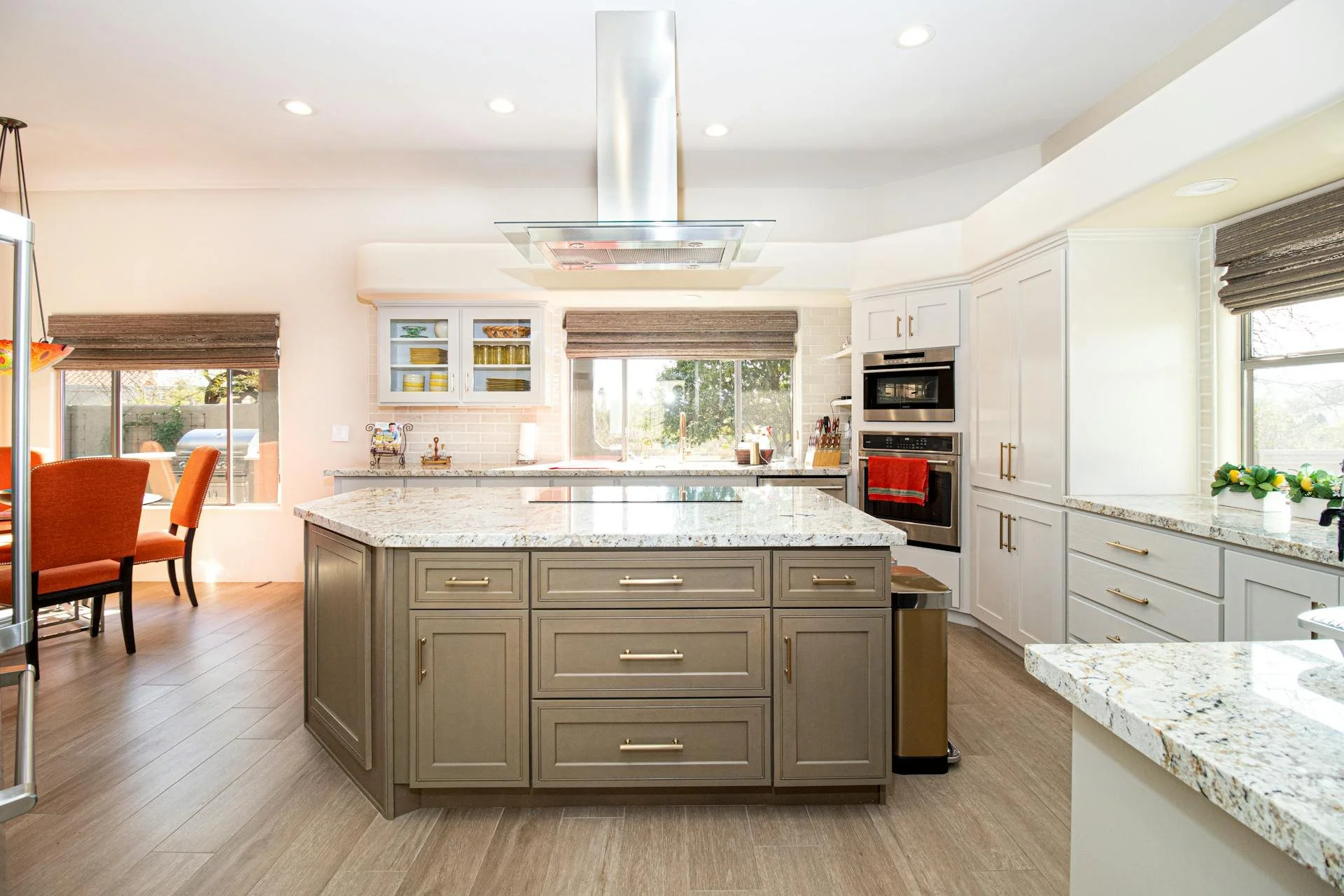How to Plan a Kitchen Remodel - A Step by Step Guide
Besides making a kitchen seem better, remodeling may add value to your house, improve its functionality, and let you add your style. It goes beyond simply following the latest trends to create an environment that genuinely suits your tastes and way of life.
But did you know that Kitchen renovations are the most expensive, followed by bathrooms? This is according to Home Improvement Statistics by made in CA. In July 2023, the average kitchen remodeling cost between $30,944 and $195 per square foot. However, the price can quickly go up to $50,000 or more, depending on your choice of appliances and materials.
Therefore, we recommend you consider if the project is worth the time, money, and effort to avoid being overwhelmed.
This guide is designed to help you fully understand the steps that go into the process before you begin.
Step 1 - Assessing Your Needs and Setting Goals
Kitchen remodeling costs can be higher than you expected, depending on materials and design preferences. So the key is to determine what you want and can afford in advance so there are no surprises later.
First, identify pain points and areas for improvement in your kitchen. Is there enough room for 2 people to cook and move around? Is there enough room to keep utensils, pots and pans organized? Is the dining area enough? Are the appliances too old or ineffective? Or does the kitchen's sheer unattractive and outdated appearance make you cringe?
Make a list of the features you want in your new kitchen and rank them in order of priority. It's helpful to know which components are necessities and which are merely preferences. Setting clear goals will help you prioritize your remodeling efforts and ensure the result meets your expectations.
Step 2 - Establish a Budget
Early on in your planning, establish a realistic budget. Ensure you understand the costs involved in various aspects of the renovation, including materials, labor, and any unforeseen expenses. Be ready to compromise and willing to look for ways to cut costs.
While hiring a general contractor can simplify the process, weighing the costs against the benefits is essential. You may explore options such as managing subcontractors directly or overseeing certain aspects of the project yourself, but always consider the expertise and efficiency a professional general contractor brings to the table.
Be prepared to compromise on materials as well. While custom cabinets and marble tiles may be enticing, stock cabinets with hardwood veneer and mass-produced porcelain tiles can yield excellent results at a lower cost.
Step 3 - Designing and Planning
Now that you have separated your needs vs. wishes let's get to the main meat- design and planning. Before diving into the renovation process, gathering inspiration and understanding the critical elements in designing and planning a functional and aesthetically pleasing kitchen is essential.
The following steps will help you to kickstart your design.
Choice of Style
You can choose from several styles, including contemporary, traditional, or minimalist aesthetics. Identifying your preferred style early in planning will guide your design decisions. You can get inspiration about the most popular styles from various sources, such as design magazines, websites, and social media platforms.
Choice of layout
Regarding layout, there are several factors to consider, such as the work triangle comprising the sink, refrigerator, and stove. Aim to create a seamless flow between these critical elements. Some of the layout options you have include one-wall, L-shape, or U-shape designs. You also want to pay attention to air circulation. Ensure proper ventilation to remove cooking odors and excess moisture in the air.
Cabinet selection
Cabinetry has a way of defining the look and feel of your kitchen, as well as functioning as your primary kitchen storage space. You can go for contemporary, shaker-style, or custom cabinets. Whatever you choose, consider how the design and layout will complement your overall kitchen aesthetic.
Additionally, explore innovative storage solutions to maximize organization and efficiency within your cabinets.
Flooring
Selecting the appropriate flooring material is essential for both durability and visual appeal. There are various options, such as hardwood, laminate, tile, or stone. Take into account factors like maintenance requirements and resistance to wear and tear, including moisture.
Countertop materials
You have several options for countertop material, too. Some of the best and cheapest countertop materials include granite, quartz, marble, and butcher block. Consider factors like durability, maintenance, and visual appeal when choosing the best countertop material for your kitchen. Select a countertop material that enhances the overall design and withstands the rigours of daily use.
Backsplash designs
Backsplashes are only a priority for some homeowners. However, a well-chosen backsplash can add character and personality to your kitchen. It can also protect the walls from splashes and spills.
Explore a variety of materials, colors, and patterns, from classic subway tile to intricate mosaic designs, to find the perfect complement to your cabinetry and countertops. Consider factors like ease of cleaning and maintenance when selecting your backsplash material.
Lighting solutions
Adequate lighting is essential for creating a functional and inviting kitchen environment. Explore a combination of ambient, task, and accent lighting to effectively illuminate different areas of the space. Consider natural light sources, fixture placement, and lighting controls to enhance your kitchen's overall ambiance and functionality.
Step 4 - Find the Right Contractor
If you haven’t already, you must find a reputable contractor unless you want to DIY your kitchen remodel. Generally speaking, a repair here and there is fine to take on yourself, but a renovation is best handled by a professional, especially when it comes to obtaining needed permits and registrations, and when dealing with complex functions like plumbing, gas, and electrical. Research local general contracting services, check credentials, read reviews, and ask for referrals to ensure you hire a reliable professional.
Step 5 - Obtaining Necessary Permits and Approvals
Speaking of permits, you would be wise to do a little research on what permits and approvals you may need for the type of work you plan to have done. Then cross-reference your findings with your contractor. Professional contractors in B.C. are there to know what is needed, discuss it with you, and ensure all legal requirements are met. This can be a huge weight off your shoulders and give you peace of mind so you can focus on how beautiful your kitchen is going to be when the work is done.
Step 6 - Prepare for Construction
Work with your contractor to set a realistic timeline for your project. You’ll want to minimize disruptions to your regular routine during construction, so it might help to set up a temporary kitchen arrangement in a finished basement or garage. A toaster oven, hot plate or outdoor grill if weather permits might suffice while your kitchen is otherwise occupied. You can likely do without such kitchen amenities like the food processor, so keep meals simple. Of course, be sure your setup is safe if you’re using electricity or gas.
Step 7 - Managing the Remodel Process
Effective communication with your contractor is critical to smoothly managing the remodeling process. Monitor progress closely and promptly address any issues that arise to keep the project on track.
As the construction phase wraps up, inspect the completed work carefully. Make any final adjustments or additions to ensure every detail meets your expectations. Use a checklist to finalize a kitchen renovation to ensure nothing is overlooked.
Conclusion
Our guide is just a basic blueprint to guide you on the most critical aspects of a kitchen remodel. You don't necessarily need to overhaul every aspect of your kitchen during the redesign process. You can focus on the areas that need updating or improvement, such as cabinetry style, layout, or lighting. This targeted approach allows for more efficient and cost-effective remodeling, ensuring that the kitchen meets both aesthetic preferences and practical needs.
If you’ve been thinking about a kitchen renovation, large or small, we’d love to have a conversation about your design ideas and talk it through with you. Just give us a call at 604-690-1364 or complete our contact form:




